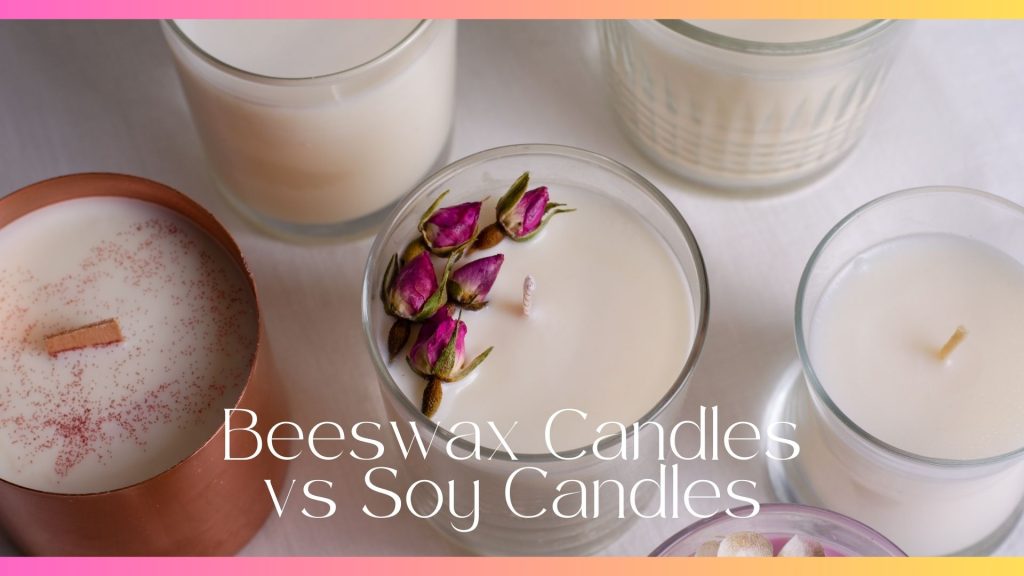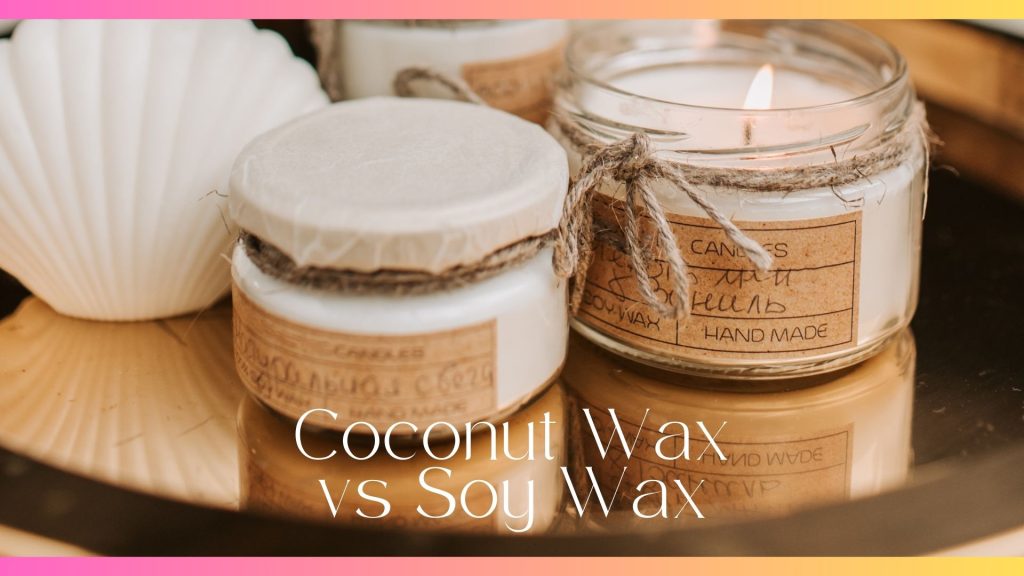Wondering what are wicks made of? You’re not alone! It’s too common that we focus on the wax and fragrance, but the type of wick being used for candle-making plays a crucial role.
In this article, we’ll explore some common materials used in wicks, their properties, and just a general rule on how to choose the right wick for your candles.
Disclaimer: This post may contain affiliate links. This means I may earn a small commission (at no cost to you) if you sign up for a program or make a purchase using my link!
Related Posts:
- How To Make Rolled Beeswax Candles: A Step-by-Step Guide
- Beeswax Candles vs Soy Candles: 6 Key Differences
- Are Beeswax Candles Better Than Others? All You Should Know
Understanding Candle Wicks
It may not be taught in school so many people overlook the importance of wicks in candle-making.
If you didn’t know, a candle wick serves as a conduit for the melted wax to travel up to the flame, where it is vaporized and burned. This makes it equally important as the type of wax used or the shape of container a candle is made out.
The design and composition of the wick influences the candle’s burn time, fragrance throw, and overall performance. Hence, you will need to test a few different types of wicks and wick sizes to achieve the best burning experience for your a type of candle you’re making.
All types of candles and candle sizes may need different wicks!
Types of Candle Wicks Commonly Used
- Cotton Wicks: Made from braided cotton fibers, these wicks are versatile and suitable for various candle types. They offer a clean, steady burn and minimal soot production.
- Wooden Wicks: Constructed from natural wood fibers, wooden wicks provide a unique visual and auditory experience with a crackling flame. They are ideal for large candles and container candles.
- Paper Wicks: Made from strips of paper, these wicks are easy to make at home and suitable for smaller candles. They may require more frequent trimming during burning.
2 Materials Used in Wicks
Candle wicks can be made from various materials, each with its own unique properties and characteristics. There are primarily two types of wicks you can choose from.
Cotton Wicks
Cotton wicks are the most common type of wick and are favored for their clean and consistent burn. They are typically braided or twisted and can be treated with various substances to enhance their performance.
Cotton wicks are versatile and suitable for a wide range of candle types, including container candles, pillar candles, and votives. They can be used with various waxes, such as paraffin, soy, and beeswax.
Types of Cotton Wicks
- Braided Wicks: Braided wicks are made by weaving multiple strands of cotton together to promote a steady and even burn, making it ideal for most candles. This also makes it easier for the wick to remain upright and burn evenly throughout the lifespan of the candle.
- Twisted Wicks: Twisted wicks are created by twisting strands of cotton together. While they are less common than braided wicks and are often used in more specialized candle applications, they can still provide a stable burn.
Benefits of Using Cotton Wicks
- Eco-Friendly: Made from natural fibers, cotton wicks are an environmentally friendly choice. They are biodegradable and do not release harmful chemicals into the air when burned (when untreated).
- Safe: Cotton wicks, especially those without metal cores or harmful chemical treatments, are considered safe for indoor use. They do not emit toxic fumes and are less likely to cause respiratory issues compared to wicks with synthetic materials.
- Easy to Source: These wicks are readily available and come in a variety of sizes and thicknesses to suit different candle-making needs. They are easy to work with, making them a favorite among both amateur and advanced candle makers.
Wooden Wicks
Wooden wicks have gained popularity in recent years for their crackling sound and unique aesthetic appeal. They are made from natural wood fibers and often come with a sustainably sourced wooden base.
Their natural wood appearance adds an element of rustic charm and elegance to candles, making them a popular choice for artisanal and high-end candles.
Composition of Wooden Wicks
- Natural Wood Fibers: Wooden wicks are typically made from thin strips of natural wood, such as cherry, birch, or maple. These wood types are chosen for their ability to burn efficiently and provide the characteristic crackling sound.
- Sustainably Sourced: Most are sourced from sustainably managed forests, making them environmentally friendly and great green alternatives for eco-conscious consumers.
- Wooden Base: Some wooden wicks come with a small wooden base, often made from the same type of wood as the wick itself. This base helps to anchor the wick securely in the candle wax, ensuring a steady burn.
Benefits of Wooden Wicks
- Enhanced Sensory Experience: The crackling sound, combined with the visual appeal of the wooden wick, creates a multi-sensory experience. This creates a relaxing and cozy atmosphere perfect for a home.
- Even Burn: Wooden wicks often provide a more even burn compared to some cotton wicks. The wide, flat shape of the wooden wick helps to distribute heat evenly across the surface of the candle, reducing the likelihood of tunneling.
- Longer Burn Time: Thanks to their efficient burning properties, candles with wooden wicks burn longer and are a cost-effective option for those looking to get the most out of their candles.
What are Wicks Made of Wood?
Wooden wicks are typically constructed from natural wood fibers, such as cherry, birch, or maple. These fibers are processed and treated to create thin, flexible strips that serve as the wick in wooden wick candles.
The wood wick may be combined with other materials, such as cotton, to enhance burn performance and stability. Wooden wicks are often more expensive but they are loved for the unique aesthetic and auditory benefits.
Compared to other kinds of wicks, wicks made of wood also carries a visually appealing flame and a gentle crackling sound reminiscent of a fireplace. This unique sound makes them a popular choice for candles today.
How to Make a Candle Wick
To DIY and make a candle wick at home, follow these steps:
- Select Material: Choose a suitable material for your wick, such as cotton string.
- Cut to Size: Cut the material to the desired length, ensuring it’s slightly longer than the height of your candle container.
- Soak in Wax: Dip the material into melted wax, such as beeswax or soy wax, ensuring it’s fully coated.
- Dry and Harden: Hang the wax-coated wick to dry and harden completely before using it in your candle-making project.
It’s important that the wick is hardened completely so that it stands upright when making your candles. This step also makes it easier for the candle to burn continuously. Once dry, trim any excess wax or uneven ends to create a clean, even wick.
3 Candle Wick Substitutes
If you’re in need of a candle wick substitute, several household items can serve as temporary solutions:
- Toothpick: Insert a toothpick into the melted wax and allow it to harden to create a makeshift wick.
- Twisted Paper: Twist a strip of paper tightly and dip it in wax to create a makeshift wick. Ensure the paper is securely anchored in the candle wax.
- Cotton String: Unravel a cotton string and twist it to form a makeshift wick. Soak the string in melted wax to stiffen it before using it in the candle.
The use of these materials differ according to the type of candle you’re making, its shape and size.
Bottom Line
Candle wicks play a vital role in the burning process, as they act as the vehicle for the wax to be drawn up and vaporized by the flame. Using the right one can ensure a clean continuous burn and avoid issues such as tunneling and mushrooming.
With any kind of candle project, it’s important that you test your wicks and candles to achieve the best combination. Good practice takes time!
Frequently Asked Questions (FAQs)
To create a homemade wick, you can use various household materials like cotton string, or even strips of paper. Begin by cutting the material to the desired length, ensuring it’s slightly longer than the height of your candle container. Next, soak the material in melted wax, such as beeswax or soy wax, to coat it thoroughly. Allow the wax-soaked wick to dry and harden before placing it in the center of your candle container. This homemade wick is now ready to use for candle making.
Several materials can be used for candle wicks, including cotton, wood, and paper. Cotton wicks are the most common and versatile option, offering a clean and steady burn. Paper wicks are suitable for smaller candles and can be easily made at home. When choosing a wick material, consider factors such as candle size, burn time, and desired flame characteristics.
The best material for wicks depends on the type of candle and desired burn characteristics. Cotton wicks are widely regarded as a top choice for most candle applications due to their clean-burning properties and availability in various sizes. They provide a consistent flame and minimal soot production, making them suitable for different types of wax. For specialty candles, such as beeswax or soy candles, wicks made from natural fibers like wooden wicks can also be excellent options, offering unique features like sustainability and aesthetic appeal.
Wicks are typically coated with a thin layer of wax to enhance their burning properties. This coating helps the wick ignite more easily and ensures a steady, consistent flame throughout the candle’s lifespan. The wax coating also helps stabilize the wick and prevents it from fraying or unraveling during burning. Depending on the type of candle and manufacturer, wicks may be coated with various types of wax, including paraffin, soy, or beeswax. Additionally, some wicks may be treated with additives or chemicals to improve their performance and longevity.



